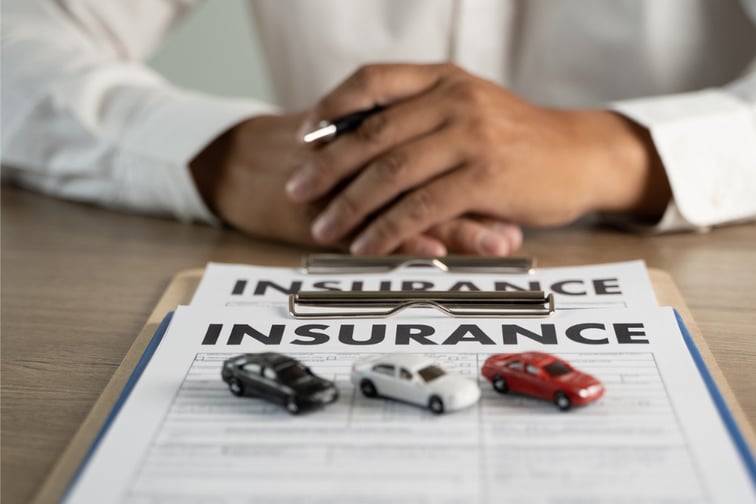

Not too many Brits pay attention to a vehicle’s insurance group when purchasing a car, but this often-overlooked detail can have a major impact on their auto insurance premiums.
Every vehicle on sale in the UK is categorised into a car insurance group, which helps insurance providers determine how much premiums they will charge. The groups are numbered anywhere from one to 50. As a general rule, the lower the insurance group, the cheaper it will be to have the car insured.
This system was introduced in the 1970s as a means of simplifying the quoting process and helping auto insurance companies determine the level of risk when calculating premiums. The original group ratings were from one to 20, but these were broadened up to insurance group 50 in 2009 to give insurers the scope to rate vehicles with different trims and specifications within model ranges separately.
Each vehicle in the UK falls into one of 50 insurance groups. Cars in groups one to 10 are the cheapest to insure as these often have lower repair costs and incorporate several safety features. Vehicles in groups 11 to 20 have slightly higher premiums, but at a level that industry insiders say are “still affordable.”
Those in car insurance groups 21 to 30, meanwhile, get middle-of-the-pack rates. According to the car-buying website Auto Trader, these vehicles are “not ideal for car owners on a budget, but… suitable for those who are looking to avoid the top range insurance premiums.”
Cars in insurance groups 31 to 40 have the second-most expensive coverage costs as most rides that fall into these brackets are “performance-focused with high speed and power,” including many sports and luxury vehicles.
Vehicles in insurance groups 41 to 50 have the highest premiums. This group includes some of the most luxurious and powerful cars such as Jaguar F-Types and Porsche 911s.
A group rating panel (GRP) consisting of representatives from the insurance industry and members of the Association of British Insurers (ABI) and Lloyd’s Market Association (LMA) are tasked to determine in which category each car will fall.
The GRP works in conjunction with the Motor Insurance Repair Research Centre (Thatcham) to compile the insurance classifications for cars across the country. The two main areas of the study are how much damage a vehicle sustains in a collision and how cheap and easy it is to repair after an accident.
There are eight factors that the panel considers when determining which grouping a vehicle will fall into. These are:
Read more: Ten most (and least) expensive job titles for car insurance
According to the consumer financial website Forbes Advisor, these parameters address the following points:
Read more: These are the 10 cheapest cars to insure for first-time drivers in the UK
The panel also assigns a letter after the insurance grouping to indicate a vehicle’s security rating. These are:
According to the motoring publication Auto Express, security ratings can move a car’s overall insurance group up or down.
“A group eight car with an excellent security rating will be moved down to group seven, and rated as 7E,” the magazine explained. “Conversely, a group eight car with a poor security score will be moved up to group nine and rated as 9D.
“Another way for a car to improve its insurance group rating is by offering a high standard of safety. If autonomous emergency braking is fitted as standard, for example, a vehicle can drop one group once it's been tested by Thatcham. Other advanced active safety aids can also have a positive effect on the insurance grouping of a car, as long as they are standard-fit equipment.”
Read more: Which are the safest new cars in the UK?
Just like any other vehicle, electric cars are categorised into one of the 50 insurance groups.
But despite being viewed as a safe and environment-friendly alternative to diesel and petrol vehicles, EVs tend to be placed in higher insurance groups as these are often expensive to repair and come with parts that are difficult to replace.
The cheapest cars to insure in the UK are typically low-spec models with smaller engines that are easy and less costly to repair. Brand-new versions of these vehicles are also relatively inexpensive. Cars that fall in insurance groups one to 10 often come with the lowest premiums.
Some of the vehicles in these groupings are Citroen C1, Vauxhall Corsa, Ford Ka, Audi A1, and Volkswagen Polo.
Read more: The Top 10 cheapest cars to insure in the UK
At the other end of the spectrum are vehicles under car insurance groups 41 to 50. These rides feature powerful engines and entail expensive repair costs, which drive up insurance rates. Among the vehicles that belong in these brackets, and therefore, are the most expensive cars to insure are Volvo XC90, Citroen C6, Audi R8, Volkswagen Phaeton, and Infiniti M.
No. Insurance groupings are set for cars when they are new, so these cannot be altered later. But if the goal is to access affordable premiums, there are several ways for UK motorists to bring down rates, including shopping around come renewal time, skipping unnecessary coverages, increasing their deductible, maintaining a clean driving record, and staying claims-free.
